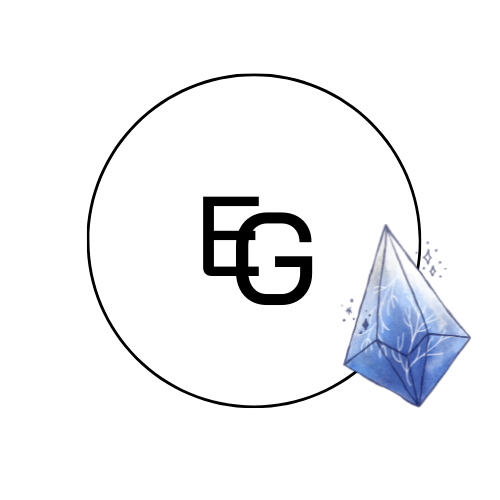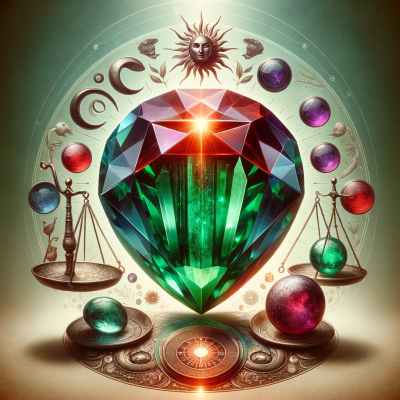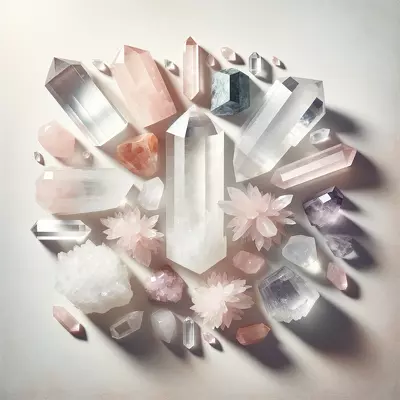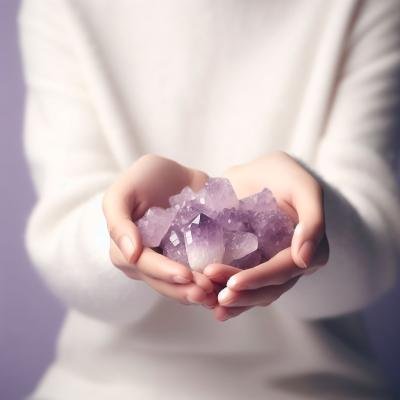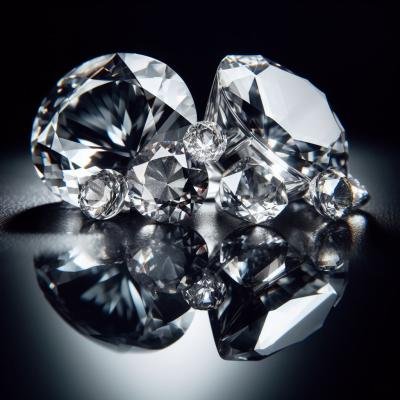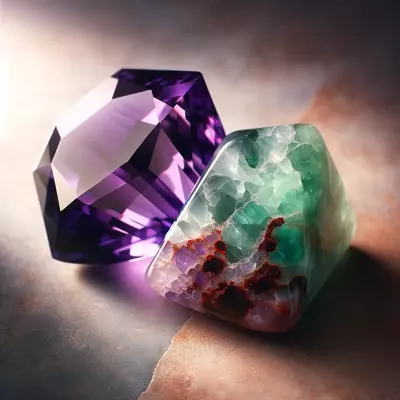From Russian Royalty to Modern Mystique: Deciphering the Meaning of the Alexandrite Stone
Alexandrite, a unique gemstone known for its remarkable color-changing ability, holds a special place in the realm of healing crystals. Its captivating hues, shifting from green in daylight to red in incandescent light, symbolize balance and harmony. Believed to bridge the physical and spiritual worlds, Alexandrite is revered for its potential to enhance emotional well-being, strengthen intuition, and bring about transformative spiritual insights, making it a cherished stone in various healing practices.
I. Introduction to Alexandrite
A. History and Discovery
Discovered in the Ural Mountains of Russia in the 19th century, Alexandrite quickly captured attention due to its unique color-changing properties. Named after Tsar Alexander II, it was initially mistaken for emerald because of its rich green color in daylight. However, by night, the stone transformed into a deep, purplish-red, showcasing its extraordinary ability to change hues based on the lighting. This remarkable feature, along with its rarity, has made Alexandrite one of the most prized gemstones in history.
B. Physical and Chemical Properties
Alexandrite is a variety of chrysoberyl, distinguished by its chromium content, which is responsible for its color-changing ability. It scores 8.5 on the Mohs hardness scale, making it both durable and suitable for everyday wear. Alexandrite’s optical properties are not just limited to color change; it also exhibits pleochroism, meaning it can show different colors when viewed from different angles. This combination of durability and optical phenomena contributes to its uniqueness in the gemstone world.
II. The Meaning of Alexandrite Stone
A. Symbolism and Cultural Significance
Throughout history, Alexandrite has been associated with luck, prosperity, and intellect. In Russian folklore, it was considered a stone of very good omen, symbolizing the balance between the physical and spiritual world. Its ability to change color was believed to represent the duality of human life. In modern times, Alexandrite’s rarity and beauty continue to symbolize wealth and elegance, making it a coveted stone among collectors and enthusiasts.
B. Healing Properties and Benefits
Alexandrite is believed to have several healing properties. It’s thought to aid in emotional healing, bringing balance and encouraging the wearer to embrace change. Its shifting colors are seen as a physical representation of adaptability and resilience. Many also believe that Alexandrite can boost self-esteem and foster creativity, making it a popular choice for artists and those seeking spiritual growth.
C. Alexandrite in Astrology and Birthstones
In astrology, Alexandrite is associated with the zodiac sign Gemini, embodying the duality and versatility of the sign. It is also one of the birthstones for June, alongside pearl and Moonstone, offering an alternative with a unique twist for those born in this month. The stone is said to bring joy and courage to Geminis, aligning with their inherent traits of adaptability and eloquence.
III. Spiritual and Emotional Influences of Alexandrite
A. Enhancing Intuition and Psychic Abilities
Alexandrite’s reputation for enhancing intuition and psychic abilities stems from its ability to connect the physical and spiritual realms. Practitioners of crystal healing believe that the stone can help open the third eye, allowing for a deeper understanding of one’s inner self and the world around them. This makes it a favored stone for meditation and spiritual exploration.
B. Balancing Emotions
The color-changing nature of Alexandrite is also seen as a metaphor for emotional balance. It’s thought to help harmonize emotions, providing stability in times of change. By promoting understanding and acceptance of different perspectives, Alexandrite can be a powerful tool for those working through emotional turmoil or seeking emotional growth.
C. Transformation and Personal Growth
Alexandrite is often associated with transformation and personal growth. Its unique properties are believed to inspire change and renewal, much like the stone itself changes colors. It is said to support the wearer during times of transition, providing strength and guidance. This makes it an ideal stone for those embarking on new journeys or looking to reinvent themselves.
IV. Practical Uses of Alexandrite in Healing
A. Physical Healing Applications
Though primarily known for its emotional and spiritual benefits, Alexandrite is also believed to have physical healing properties. It is said to aid in the treatment of pancreatic disorders, lymph node swelling, and ailments of the spleen. It can also help with detoxification and regeneration of neurological tissues.
B. Mental and Emotional Healing Techniques
In the realm of mental and emotional healing, Alexandrite is used to alleviate stress and anxiety. Its calming energies are said to soothe the mind, making it easier to overcome challenges and deal with life’s ups and downs. It can also be a source of comfort and support during periods of grief or depression.
C. Incorporating Alexandrite into Daily Life
Alexandrite can be incorporated into daily life in various forms, such as jewelry, meditation stones, or decorative pieces. Wearing alexandrite jewelry is believed to bring its healing properties close to the body while meditating with the stone, which can enhance spiritual awareness and emotional healing. Even as a decorative piece, Alexandrite’s presence in a living space can contribute to a harmonious and balanced atmosphere.
V. Complementary Gemstones
A. Identifying Synergistic Stones
When pairing Alexandrite with other gemstones, it’s important to consider their energies and how they complement each other. Stones that align with Alexandrite’s properties of balance and transformation are ideal.
B. How to Combine Alexandrite with Other Gemstones
Combining Alexandrite with gemstones like Lapis Lazuli, known for its deep spiritual insights, or Moonstone, which promotes emotional balance, can enhance its healing effects. For grounding and stability, pairing it with Smoky Quartz or Black Tourmaline can be effective. These combinations not only aesthetically harmonize but also synergize their energies for a more holistic healing experience.
C. Creating Personalized Healing Combinations
To create a personalized healing combination with Alexandrite, one should consider one’s own healing needs. If seeking emotional healing, pairing Alexandrite with Rose Quartz can be beneficial. For mental clarity, Fluorite is an excellent choice. It’s also important to be intuitive in these pairings; the gemstones should feel right and resonate with the individual’s energy. Experimenting with different combinations in jewelry or meditation practices can lead to discovering the most effective and personally resonant pairings.
VI. FAQs
Q: What is the primary meaning of Alexandrite?
A: Alexandrite symbolizes balance and adaptability, reflecting its unique color-changing ability. It’s believed to bring joy and courage and enhance emotional well-being.
Q: How does Alexandrite influence spiritual and emotional health?
A: Alexandrite is thought to enhance intuition, aid in emotional balance, and promote transformation and personal growth, thereby positively influencing spiritual and emotional health.
Q: Can Alexandrite be used for physical healing?
A: Yes, Alexandrite is believed to aid in the treatment of pancreatic disorders, support lymph node health, and assist in the regeneration of neurological tissues.
Q: Is Alexandrite connected to any zodiac sign?
A: Alexandrite is associated with the zodiac sign Gemini, embodying its duality and adaptability.
Q: How can I incorporate Alexandrite into my daily life for its healing properties?
A: Alexandrite can be worn as jewelry, used in meditation, or kept as a decorative piece to bring its healing properties closer to you.
Q: What gemstones complement Alexandrite for healing purposes?
A: Stones like pearls and moonstones, which also represent balance and adaptability, complement Alexandrite well in healing practices.
Q: What makes Alexandrite unique among other gemstones?
A: Alexandrite’s unique color-changing ability, coupled with its rare occurrence and strong healing properties, sets it apart from other gemstones.
VII. Conclusion
A. Summary of Alexandrite’s Significance
Alexandrite stands as a remarkable gemstone, symbolizing balance, adaptability, and transformation. Its unique color-changing property not only makes it visually stunning but also imbues it with deep symbolic meaning. Its association with emotional and spiritual healing, along with its physical healing properties, renders it a multifaceted stone cherished in various cultures and healing practices.
B. Personal Reflection on the Use of Alexandrite
Embracing Alexandrite in daily life, whether for its aesthetic appeal or its healing properties, can be a deeply personal and transformative experience. Its ability to change color in different lights serves as a constant reminder of life’s ever-changing nature and the beauty of adaptability. Alexandrite, therefore, becomes not just a gemstone but a symbol of life’s perpetual evolution.
VIII. Suggested Readings
Before delving into the world of alexandrite and gemstone healing, it’s beneficial to explore literature that provides deeper insights into these fascinating topics. The following books offer valuable information and perspectives:
- “The Crystal Bible” by Judy Hall – A comprehensive guide to crystals, including Alexandrite, detailing their properties and uses in healing.
- “Love Is In The Earth: A Kaleidoscope of Crystals” by Melody – This reference book delves into the metaphysical properties of crystals, including Alexandrite, and their applications in healing.
- “The Book of Stones: Who They Are and What They Teach” by Robert Simmons and Naisha Ahsian – An insightful exploration of various stones and their spiritual significance, with a section on Alexandrite.
- “Gemstones of the World” by Walter Schumann – A detailed guide to gemstones, including Alexandrite, covering their physical properties and historical aspects.
- “Crystal Healing & The Human Energy Field” by Mrs. Marion McGeough – An introduction to crystal healing, explaining how stones like Alexandrite can influence the human energy field.
These books provide a wealth of knowledge for both beginners and seasoned enthusiasts in the field of gemstones and crystal healing. They offer a blend of scientific information, historical context, and spiritual insights, making them invaluable resources for anyone interested in the profound world of gemstones and their healing properties.
